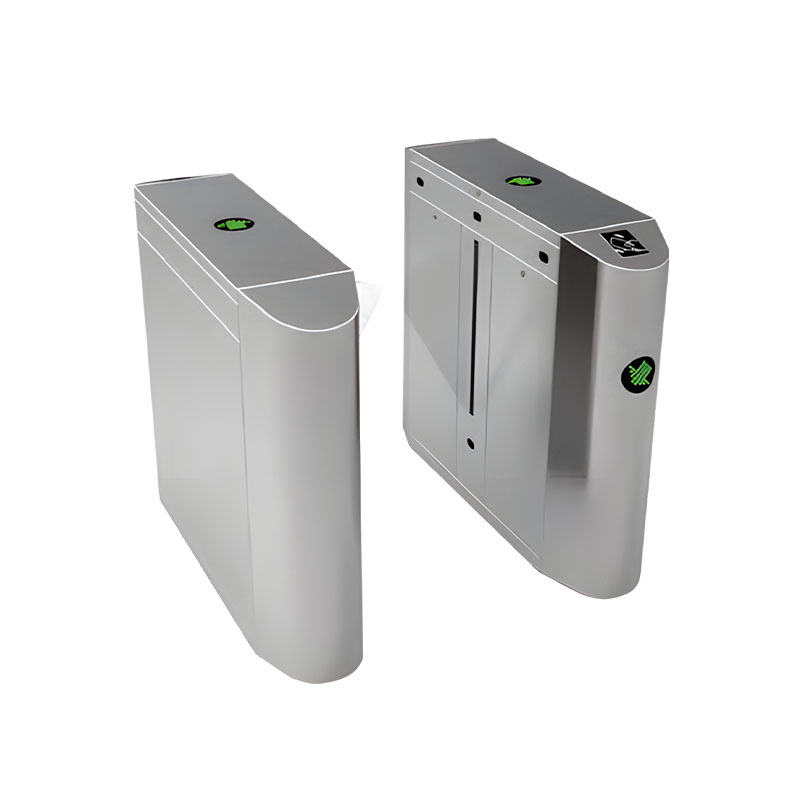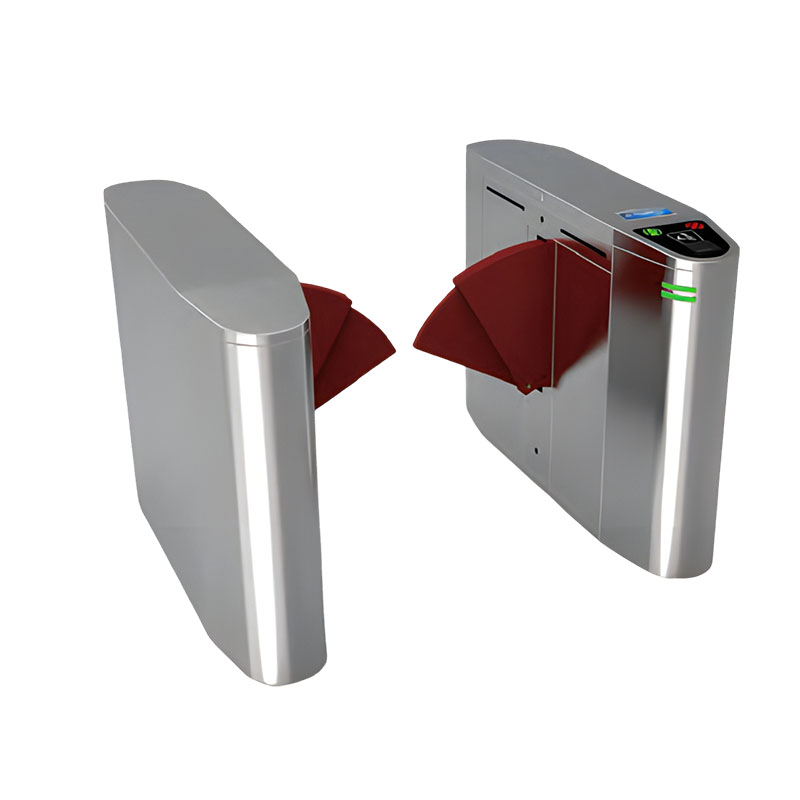Does the anti-tailgating function of pedestrian access gates significantly enhance the security control level at entry/exit points?
Release Time : 2025-09-25
In modern public security and personnel management systems, access control at entry/exit points has evolved beyond simple physical barriers, moving towards intelligent and sophisticated solutions. As a critical node connecting open areas with controlled spaces, the core mission of a pedestrian access gate is not only to facilitate orderly passage but also to prevent unauthorized entry. Among its various security features, anti-tailgating capability is particularly crucial; it directly determines whether the gate truly possesses closed-loop management capabilities and is a key metric for evaluating its overall security performance.
Tailgating refers to unauthorized individuals entering immediately behind authorized personnel after the gate has opened, exploiting the brief time window before the gate closes to bypass authentication. This occurs frequently in office buildings, subway stations, airports, data centers, and prisons, potentially leading to information leaks, property damage, and even public safety threats. Traditional access control systems or simple turnstiles often focus solely on authentication; once verified, they assume the passage is complete, neglecting monitoring of the subsequent movement, thus creating vulnerabilities for tailgating. Anti-tailgating gates, however, employ multiple technologies to establish a comprehensive monitoring system from authentication to passage.
The core of anti-tailgating lies in accurately detecting the number of people and their behavior within the passage. Modern access gates typically integrate multiple infrared sensors, strategically positioned along the passage to form a dense detection network. When an authorized person passes through with a card or facial recognition, the system not only verifies their identity but also tracks their movement in real time. The sensor network determines if only one person is entering and continuously monitors the passage until the gate closes. If the system detects a second person following closely behind, regardless of whether they have valid credentials, an alarm is triggered, the gate remains locked, and a visual/audible alert is issued to prevent unauthorized entry. This behavior-based recognition mechanism effectively addresses the shortcomings of relying solely on identity verification.
Even more advanced systems integrate video analytics, capturing the posture, stride, and spacing of passersby through cameras, combining this data with sensor data for comprehensive analysis. This allows accurate differentiation between legitimate sequential passage and malicious tailgating, even when multiple people pass through closely spaced, minimizing false alarms. Some high-end pedestrian access gates also feature direction recognition, preventing unauthorized entry or unauthorized lingering within the passage, thus enhancing access control.
Implementing anti-tailgating functionality relies not only on hardware but also on intelligent control logic. The system needs to have a rapid response capability, completing data collection, analysis, and decision-making within milliseconds to ensure a swift reaction. Furthermore, the alarm mechanism should have a tiered response capability, taking different actions based on the risk level, such as simply recording the event, issuing a warning, or triggering security personnel intervention, thus avoiding unnecessary disruption to normal traffic flow.
From a management perspective, anti-tailgating significantly enhances the authority of access control. It sends a clear message to all personnel: every entry must be independently verified, and any attempt to circumvent the system will be recorded and blocked. This deterrent effect effectively discourages rule-breaking behavior. The system automatically records the time, location, and image information of any tailgating incident, providing evidence for subsequent investigations and creating a traceable management loop.
Moreover, the anti-tailgating design balances security and efficiency. While ensuring security, the system still allows for the rapid and continuous passage of authorized personnel, such as family members or team members. A reasonable threshold for consecutive passes can be set to distinguish legitimate groups, preventing false alarms and inconvenience. Infrared anti-pinch and dynamic sensing technologies also ensure that legitimate users are not harmed during tailgating detection.
In summary, the anti-tailgating function of pedestrian access gates is not merely an added feature, but a key upgrade that extends security control from "identity verification" to "behavioral monitoring." Through multi-dimensional sensing, intelligent judgment, and rapid response, it creates an invisible yet robust defense, significantly enhancing the overall security level of access control areas and providing more reliable and intelligent management for various controlled environments.
Tailgating refers to unauthorized individuals entering immediately behind authorized personnel after the gate has opened, exploiting the brief time window before the gate closes to bypass authentication. This occurs frequently in office buildings, subway stations, airports, data centers, and prisons, potentially leading to information leaks, property damage, and even public safety threats. Traditional access control systems or simple turnstiles often focus solely on authentication; once verified, they assume the passage is complete, neglecting monitoring of the subsequent movement, thus creating vulnerabilities for tailgating. Anti-tailgating gates, however, employ multiple technologies to establish a comprehensive monitoring system from authentication to passage.
The core of anti-tailgating lies in accurately detecting the number of people and their behavior within the passage. Modern access gates typically integrate multiple infrared sensors, strategically positioned along the passage to form a dense detection network. When an authorized person passes through with a card or facial recognition, the system not only verifies their identity but also tracks their movement in real time. The sensor network determines if only one person is entering and continuously monitors the passage until the gate closes. If the system detects a second person following closely behind, regardless of whether they have valid credentials, an alarm is triggered, the gate remains locked, and a visual/audible alert is issued to prevent unauthorized entry. This behavior-based recognition mechanism effectively addresses the shortcomings of relying solely on identity verification.
Even more advanced systems integrate video analytics, capturing the posture, stride, and spacing of passersby through cameras, combining this data with sensor data for comprehensive analysis. This allows accurate differentiation between legitimate sequential passage and malicious tailgating, even when multiple people pass through closely spaced, minimizing false alarms. Some high-end pedestrian access gates also feature direction recognition, preventing unauthorized entry or unauthorized lingering within the passage, thus enhancing access control.
Implementing anti-tailgating functionality relies not only on hardware but also on intelligent control logic. The system needs to have a rapid response capability, completing data collection, analysis, and decision-making within milliseconds to ensure a swift reaction. Furthermore, the alarm mechanism should have a tiered response capability, taking different actions based on the risk level, such as simply recording the event, issuing a warning, or triggering security personnel intervention, thus avoiding unnecessary disruption to normal traffic flow.
From a management perspective, anti-tailgating significantly enhances the authority of access control. It sends a clear message to all personnel: every entry must be independently verified, and any attempt to circumvent the system will be recorded and blocked. This deterrent effect effectively discourages rule-breaking behavior. The system automatically records the time, location, and image information of any tailgating incident, providing evidence for subsequent investigations and creating a traceable management loop.
Moreover, the anti-tailgating design balances security and efficiency. While ensuring security, the system still allows for the rapid and continuous passage of authorized personnel, such as family members or team members. A reasonable threshold for consecutive passes can be set to distinguish legitimate groups, preventing false alarms and inconvenience. Infrared anti-pinch and dynamic sensing technologies also ensure that legitimate users are not harmed during tailgating detection.
In summary, the anti-tailgating function of pedestrian access gates is not merely an added feature, but a key upgrade that extends security control from "identity verification" to "behavioral monitoring." Through multi-dimensional sensing, intelligent judgment, and rapid response, it creates an invisible yet robust defense, significantly enhancing the overall security level of access control areas and providing more reliable and intelligent management for various controlled environments.







